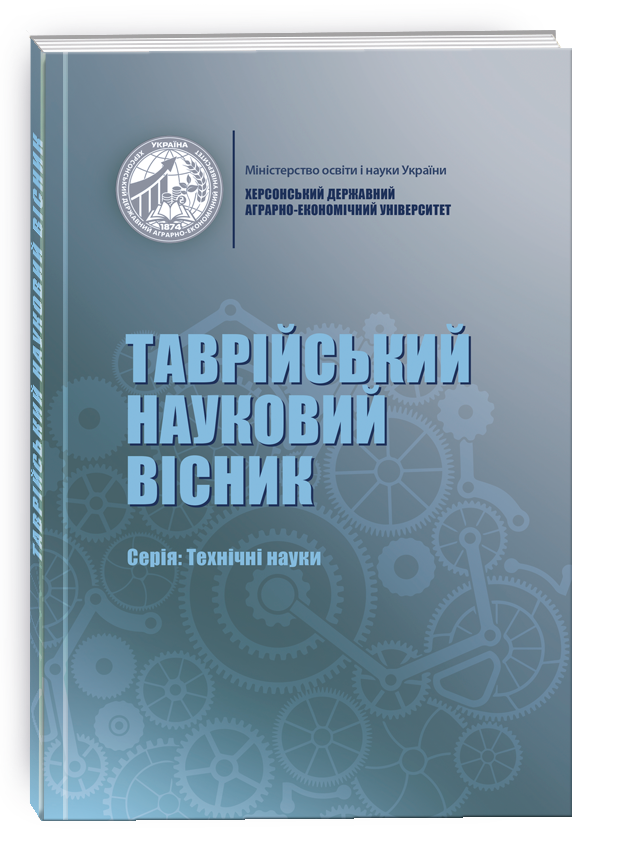RECONSTRUCTION OF A SPATIAL-TEMPORARY MODEL OF FAST DESTRUCTIVE PROCESSES USING REMOTE SENSING
Keywords:
unmanned aerial vehicle, remote sensing, multi-view observation, uncertainty, fire front, voxel, octotree, soft gray fuzzy setAbstract
The paper presents a new method for constructing a soft gray-fuzzy model of a rapid destructive process using remote sensing by a group of unmanned aerial vehicles on the example of a forest fire. The proposed approach allows obtaining a three-dimensional spatiotemporal model of the fire front spreading, the movement of which reflects the dynamics of the process. To overcome the uncertainty of observations caused by the influence of wind, smoke, turbulence and vibrations, obstacles, curvatures and distortions, a complex uncertainty model was constructed, based on the joint use of fuzzy and soft sets as well as “gray” numbers. To organize remote sensing by a group of unmanned aerial vehicles, a spatial model was developed based on the hierarchical structure of voxels that provide areas of three-dimensional space for comparing images from different positions, and a recursive octotree model, which allows resolving the contradiction between the accuracy of observations and the speed of model construction. A set of possible voxel states is determined, their classification is proposed, a method for calculating a three- dimensional observation vector is developed, represented by an array of confidence vectors, with the help of which the grey-fuzzy state of voxels is determined, which allows combining observations from different observers and sequentially refining them. The development of a rapid destructive process is represented by a soft grey-fuzzy set of voxels, which are attributed to a certain state at a certain moment, which allows determining the convincing, uncertain, suspicious and negative components of the process model, while the convincing component represents the stable core of the fire front, the uncertain component – its variable caused by the uncertainty of observations, the negative component – the space not involved in the development of the process.The incompleteness of observations is modeled using the suspicious component. The proposed method allows reproducing rapid spatially distributed destructive processes of different classes, smoothing out the effects of distortions and noise and providing acceptable performance.
References
Shen, G., Zhou, L., Wu, Y., Cai, Z.: A global expected risk analysis of fatalities, injuries, and damages by natural disasters. Sustainability, 2018, vol. 10(7), p. 2573.
Newman, J., Maier, H., Riddell, G., Zecchin, A., Daniell, J., Schaefer, A., van Delden, H., Khazai, B., O’Flaherty, M., Newland, C.: Review of literature on decision support systems for natural hazard risk reduction: current status and future directions. Env. modeling & software, 2017, vol. 96(C), pp. 378–409.
Yuan, C., Liu, Z., Zhang, Y.: Aerial images–based forest fire detection for firefighting using optical remote sensing techniques and unmanned aerial vehicles. J. Intel. & Robotic Syst., 2017, vol. 88, pp. 635–654.
Merino, L., Martínez de Dios, J., Ollero, A.: Cooperative Unmanned Aerial Systems for Fire Detection, Monitoring, and Extinguishing. In: Valavanis K., Vachtsevanos G. (eds). Handbook of Unmanned Aerial Vehicles, 2015, pp. 2693–2722.
Sherstjuk, V., Zharikova, M., Dorovskaja, I., Sheketa, V.: Assessing Forest Fire Dynamics in UAV-Based Tactical Monitoring System. Advances in Intelligent Systems and Computing, 2020, vol. 1246, pp. 285–301.
Sherstjuk, V., Zharikova, M., Dorovskaja, I.: 3D Fire Front Reconstruction in UAV-Based Forest-Fire Monitoring System. In: Proc. of IEEE Third International Conference on Data Stream Mining & Processing (DSMP), 2020, pp. 243–248.
Andrews, P.L.: The Rothermel surface fire spread model and associated developments: A comprehensive explanation. Gen. Tech. Rep. RMRS-GTR-371. Fort Collins, CO: U.S. Department of Agriculture, Forest Service, Rocky Mountain Research Station. 2018, 121 p.
Sherstjuk, V., Zharikova, M.: Evaluation of Fire Intensity Based on Neural Networks in a Forest-Fire Monitoring System. In: Proc. of IEEE 39th Int. Conf. on Electronics and Nanotechnology (ELNANO’2019), Kyiv, Ukraine, 2019, pp. 802–807.
Sherstjuk, V., Zharikova, M.: Fire-Front Recognition in UAV-Based Forest-Fire Monitoring System Using Fuzzy Rough Soft Sets. In: Proc. of IEEE 2nd Ukraine Conf. on Electrical and Computer Engineering (UKRCON), Lviv, Ukraine, 2019, pp. 1091–1096.
Mendez, O., Hadfield, S., Pugeault, N., Bowden, R.: Taking the Scenic Route to 3D: Optimising Reconstruction from Moving Cameras. In: 2017 IEEE Int. Conf. on Computer Vision (ICCV), Venice, 2017, pp. 4687–4695.
Scott, W.R., Roth, G., Rivest, J.-F.: View planning for automated threedimensional object reconstruction and inspection. ACM Computing Surveys, 2003, vol. 35(1), pp. 64–96.
Galliani, S., Lasinger, K., Schindler, K.: Massively Parallel Multiview Stereopsis by Surface Normal Diffusion. In: IEEE Int. Conf. on Computer Vision (ICCV), Santiago, 2015, pp. 873–881.
Isler, S., Sabzevari, R., Delmerico, J., Scaramuzza, D.: An information gain formulation for active volumetric 3D reconstruction. In: IEEE Int. Conf. on Robotics and Automation (ICRA), Stockholm, 2016, pp. 3477–3484.
Vasquez-Gomez, J., Sucar, L., Murrieta-Cid, R., Lopez-Damian, E.: Volumetric Next-Best-View Planning for 3D Object Reconstruction with Positioning Error. Int. J. of Advanced Robotic Syst., 2014, vol. 11(10), pp. 1–13.
Sherstjuk, V., Zharikova, M., Dorovskaja, I., Chornyi, D., Gusev, V., Sokol, I.: 3D Fire Front Reconstruction Based on Multi-View Observation and Complex Uncertainty Model. Advanced Computer Information Technologies: Proc. of 11th Int. Conf., Deggendorf, Germany, 2021, pp. 761–765.
Alon, N., Spencer, J.: The Probabilistic Method. 2016. Wiley, New York, 4th. ed.
Zadeh, L.A.: Fuzzy sets. Information and Control, 1965, vol. 8(3), pp. 338–353.
Pawlak, Z.: Rough sets. Int. J. of Computer & Information Sciences, 1982, vol. 11(5), pp. 341–356.
Molodtsov, D.: Soft Set Theory – first results. Comput. and Math. with Appl., 1999, 37, 19–31.
Liu, S., Lin, Y.: Grey Numbers and Their Operations. In: Grey Information. Advanced Information and Knowledge Processing, 2006, pp. 23–43.
Yamaguchi, D., Li, G.-D., Chen, L.-C., Nagai, M.: Reviewing crisp, fuzzy, grey and rough mathematical models. In: Proc. of IEEE Int. Conf. on Grey Systems and Intelligent Services, 2007, Nanjing, China, pp. 547–552.
Hornung, A., Wurm, K., Bennewitz, M., Stachniss, C., Burgard, W.: Octomap: An efficient probabilistic 3d mapping framework based on octrees. Autonomous Robots, 2013, vol. 34(3), pp. 189–206.
Qian, G., Wang, H., Feng, X.: Generalized hesitant fuzzy sets and their application in decision support system. Knowledge-Based Syst., 2013, vol. 37, pp. 357–365.







